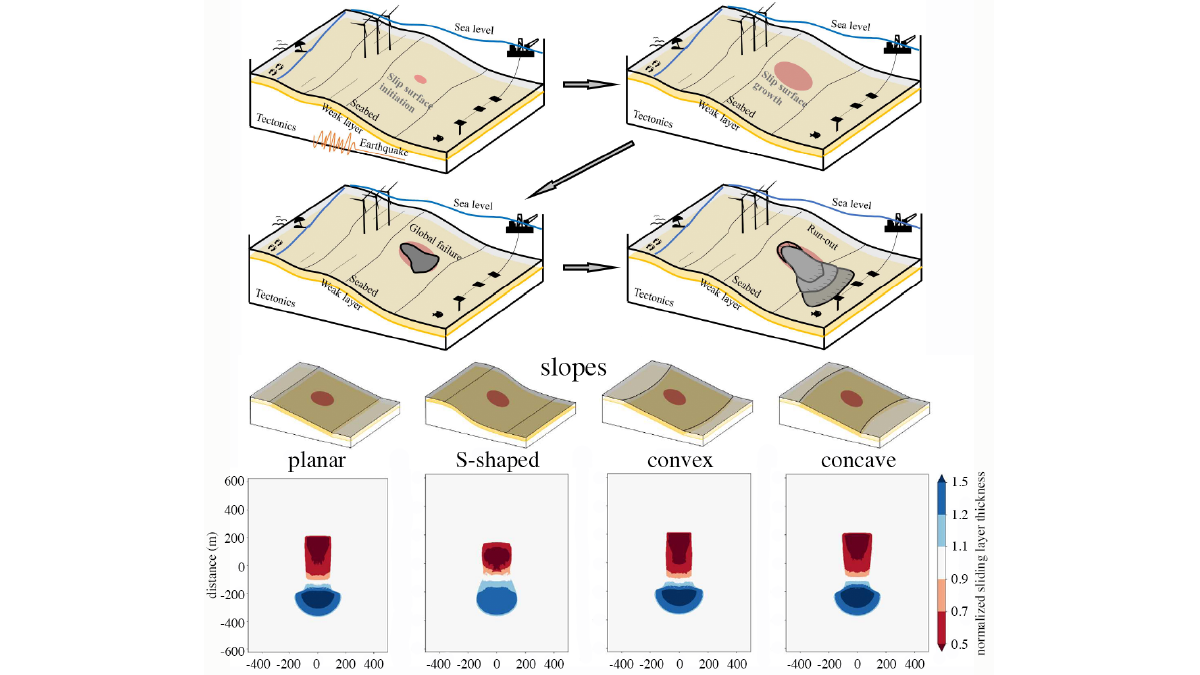Editors’ Highlights are summaries of recent papers by AGU’s journal editors.
Source: Journal of Geophysical Research: Earth Surface
Long runout deep-sea slides are cousins of powder snow avalanches barreling down mountain slopes (Sovilla et al., 2015). Although largely out of sight, they play untold havoc with submarine communication cables, unseat anchored infrastructure, and provoke tsunamis. While earlier work addressed their rapid propagation on the seabed (Kim et al., 2019), few studies focused on the initial growth of the weakened sedimentary layer from which they originate.
In a new study, Zhang and Puzrin (2022) use numerical simulations to elucidate this transition from initial failure to subsequent growth. Because the slide is thin relative to its planar dimensions, they employ the St-Venant approximation to average equations in its depth. From estimates of shear strength in the weakened layer and other mechanical descriptors of the sliding layer, they validate predictions against a slide on the eastern margin of New Zealand (Watson et al., 2020).
For different geometrical configurations of seabed slope, they then show where patches of weakened sediment layers spread around their initial area, and whether they become unstable. After the rapid initial phase, they compute the evolution, extent and redeposition of the flowing sediment. As the figure above shows, the resulting patterns bear resemblance to the beautiful aeolian avalanches found in the lee of sand dunes (Sutton et al., 2013).
This work paves the way toward new studies that will explicitly account for triggers of submarine landslides, thus elucidating how they form and the risk they pose to ocean ecology and human facilities.
Citation: Zhang, W., & Puzrin, A. M. (2022). How small slip surfaces evolve into large submarine landslides—Insight from 3D numerical modeling. Journal of Geophysical Research: Earth Surface, 127, e2022JF006640. https://doi.org/10.1029/2022JF006640
—Michel Louge, Associate Editor, Journal of Geophysical Research: Earth Surface

